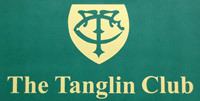 | ||
The Tanglin Club is one of the most prominent and prestigious social clubs in Singapore. As of end 2009 the club had an active membership of 7,810, comprising approximately 70 different nationalities. Its clubhouse is located off Stevens Road, near the centre of town in Singapore. The club's facilities include four restaurants, five bars, several function rooms, a cinema/theatrette, two libraries, and extensive sports and recreation facilities including two swimming pools, a gymnasium, a four-table billiards room, four outdoor and two indoor tennis courts, six single and two jumbo double squash courts and a large roof-top lawn bowls green. The Club's sports sections offer external activities such as scuba diving and golf, and a new sports complex was completed in 2008.
The Tanglin Club was founded in 1865. Its founding President was Singapore's first Police Commissioner, Thomas Dunman.
History
Tanglin Club, one of Singapore's most prestigious and prominent social clubs, was founded in 1865 to cater to the social and recreational needs of locally based British officials and expatriates. That year, an interim committee was formed, and it comprised Thomas Dunman (President), Herbert Buchanan (Vice-President), Lancelot C. Masfen, Jos. M. Webster, William Mulholland, Walter Oldham, Edwin A. G. C. Cooke and John R. Forrester. Although race was not stipulated as a criterion for membership, only Europeans were admitted. Club members however, were mainly British. On 26 June 1866, Tanglin Club purchased a property in the Claymore Estate for $600. In the same year, the construction of a clubhouse with bowling alleys, billiard rooms, stables, and a dance floor began.
The clubhouse was constructed from bricks made to British standards by a brickfield in Serangoon area. After plastering, the brick walls were washed or distempered. The building had a long overhang roof that was slabbed over with red Chinese clay tiles. The upper storey of the clubhouse, where the main activities were held, had verandahs around its perimeter. Its floor was laid with Changai timber, and supported by timber joists. The dance floor, which was later reputed to be the best in Singapore, was reinforced with cast iron supports. The kitchens, changing rooms and toilet which were located on the ground floor, were laid with red Malaccan tiles and bricks.
By the 1890s, the Claymore district had evolved into a prestigious district occupied by many prominent European residents. During the construction of the German Teutonia Club (present-day Goodwood Park Hotel), Tanglin Club accommodated the Teutonia members. When the palatial Teutonia Club was completed in 1900, it quickly overshadowed the old and dismal looking Tanglin Club. Tanglin Club's German membership had dwindled from a strong number of 236 a decade ago to 181 in 1911. When World War I broke out in 1914, Teutonia Club was declared an enemy property.
During the Japanese occupation, Tanglin Club was used by the Japanese army as a club for their officers. The club was also used as a base for their propaganda unit as well as their storage area for rations and weapons. After the Japanese surrender, Tanglin Club came under the management of the Navy, Army and Air Force Institutes (NAAFI) until March 1946. It was not until 1 September 1946 that the club was informally reopened.
In 1962, the government appealed to clubs in Singapore to have at least 50% Singaporean membership. After an extraordinary general meeting, the club's membership rule was amended to admit all races. The first Singaporeans to join the club included Shaw Vee Meng, Dr Yeo Chee Peng, Tan Eng Han, Koh Eng Yam, U. S. Chan and C. K. Sng.
Traditionally, women paid lower membership fees but were not given voting rights. It was only in April 1995 that women who were full members were accorded equal voting privileges in the club. Due to the club's constitution that capped Singaporean membership to 51%, the waiting time for Singaporeans has been known to be as long as 25 years.
The construction of a new four-storey clubhouse was carried out in phases since September 1977 and was completed in March 1981. On 14 March 1981, members bade farewell to the original clubhouse at a closing ceremony. Before the old clubhouse was demolished, memorabilia from the old building were auctioned off in support of the Children's Charity Association of Singapore. More than a month later, on 25 April 1998, the present clubhouse was officially opened by the then Minister for Law E. W. Barker. Over the years, the clubhouse had been upgraded to cater to members' needs. In 2005, the club embarked on a $21 million upgrading plan that included the construction of a new sports complex. The upgrading project is scheduled for completion in October 2007. In 2006, the club membership was 5,800, and it comprised 70 nationalities.
